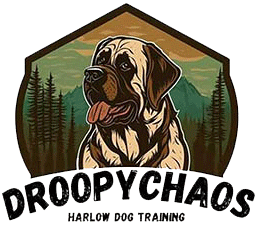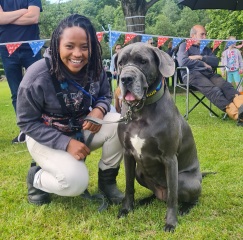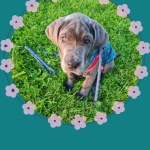“Dogs Reacting Badly in Public: Understanding and Managing Canine Behavior”
Dogs are typically known for their loyalty, playfulness, and affection toward their owners. However, just like humans, dogs can experience moments of stress, fear, or aggression, leading to undesirable behaviors, especially in public settings. Understanding the reasons behind these behaviors and employing appropriate management techniques are essential for responsible dog ownership and public safety.
One common scenario where dogs may react badly in public is encountering unfamiliar people or animals. Dogs are territorial by nature, and encountering strangers can trigger feelings of anxiety or defensiveness. This can manifest in behaviors such as barking, growling, or even lunging at perceived threats. Additionally, dogs may react negatively to other dogs, especially if they feel threatened or intimidated.
Another factor that can contribute to dogs reacting badly in public is lack of socialization or training. Dogs that have not been adequately exposed to different environments, people, and animals during their critical socialization period (usually between 3 and 14 weeks of age) may exhibit fear or anxiety in unfamiliar situations. Similarly, dogs that have not received proper obedience training may lack the skills to respond appropriately to commands or cues from their owners in challenging environments.
Furthermore, underlying medical issues or pain can also contribute to behavioral problems in dogs. If a dog is experiencing discomfort or pain, they may be more irritable or reactive than usual. It’s essential for dog owners to be vigilant about their pet’s health and seek veterinary care if they notice any signs of illness or discomfort.
Managing a dog’s behavior in public starts with prevention and preparation. Proper socialization and training from a young age are crucial for helping dogs feel comfortable and confident in various situations. Exposing them to different environments, people, and animals in a positive and controlled manner can help prevent fear-based reactions later in life.
Additionally, teaching basic obedience commands such as sit, stay, and come can provide owners with greater control over their dog’s behavior in public. Consistent reinforcement of these commands through positive reinforcement techniques, such as treats and praise, can help strengthen the bond between owner and dog and improve responsiveness in challenging situations.
When encountering potential triggers in public, it’s essential for owners to remain calm and composed. Dogs are highly attuned to their owner’s emotions, and displaying fear or anxiety can exacerbate their own reactions. Using a confident and assertive tone of voice, along with clear and consistent commands, can help redirect a dog’s attention and diffuse tense situations.
In some cases, it may be necessary to remove the dog from the triggering environment altogether. This could involve calmly walking away from the source of the stress or seeking a safe space where the dog can decompress and relax. Avoiding confrontational or punitive methods of correction is important, as these can escalate the dog’s anxiety and lead to further behavioral issues.
Seeking the guidance of a professional dog trainer or behaviorist can also be beneficial for owners struggling to manage their dog’s behavior in public. These experts can provide personalized advice and strategies for addressing specific issues and improving overall obedience and socialization skills.
In conclusion, dogs reacting badly in public can be a challenging issue for owners to navigate, but with understanding, patience, and proactive management techniques, it is possible to help dogs feel more comfortable and confident in various environments. By prioritizing proper socialization, training, and positive reinforcement, owners can foster a strong bond with their canine companions and promote responsible behavior in public settings.




